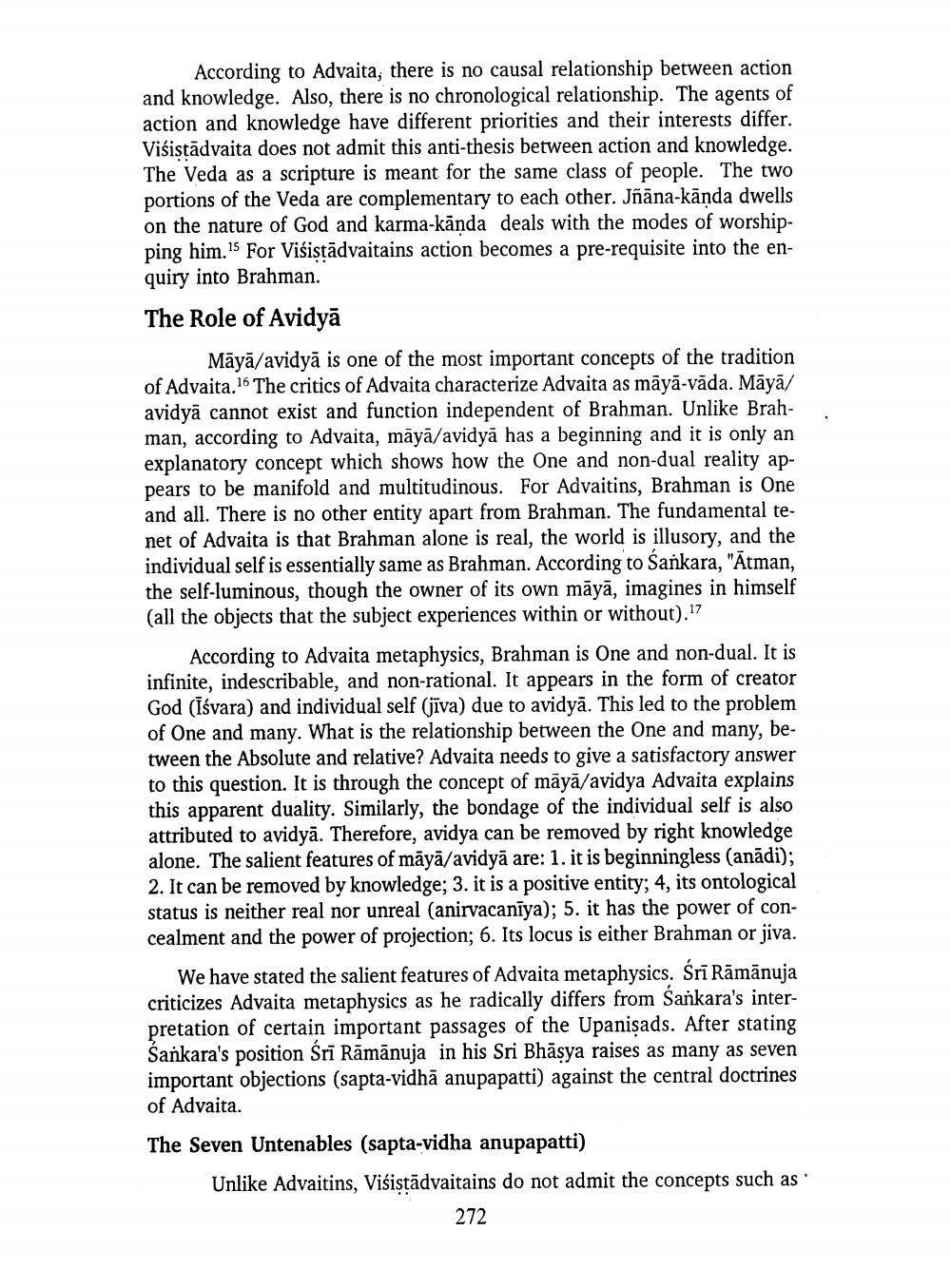________________
According to Advaita, there is no causal relationship between action and knowledge. Also, there is no chronological relationship. The agents of action and knowledge have different priorities and their interests differ. Viśistadvaita does not admit this anti-thesis between action and knowledge. The Veda as a scripture is meant for the same class of people. The two portions of the Veda are complementary to each other. Jñana-kāṇda dwells on the nature of God and karma-kāṇda deals with the modes of worshipping him.15 For Visiṣṭādvaitains action becomes a pre-requisite into the enquiry into Brahman.
The Role of Avidyā
Māyā/avidya is one of the most important concepts of the tradition of Advaita. 16 The critics of Advaita characterize Advaita as māyā-vāda. Māyā/ avidya cannot exist and function independent of Brahman. Unlike Brahman, according to Advaita, māyā/avidyā has a beginning and it is only an explanatory concept which shows how the One and non-dual reality appears to be manifold and multitudinous. For Advaitins, Brahman is One and all. There is no other entity apart from Brahman. The fundamental tenet of Advaita is that Brahman alone is real, the world is illusory, and the individual self is essentially same as Brahman. According to Sankara, "Atman, the self-luminous, though the owner of its own māyā, imagines in himself (all the objects that the subject experiences within or without).17
According to Advaita metaphysics, Brahman is One and non-dual. It is infinite, indescribable, and non-rational. It appears in the form of creator God (Ïśvara) and individual self (jiva) due to avidyā. This led to the problem of One and many. What is the relationship between the One and many, between the Absolute and relative? Advaita needs to give a satisfactory answer to this question. It is through the concept of māyā/avidya Advaita explains this apparent duality. Similarly, the bondage of the individual self is also attributed to avidya. Therefore, avidya can be removed by right knowledge alone. The salient features of maya/avidya are: 1. it is beginningless (anadi); 2. It can be removed by knowledge; 3. it is a positive entity; 4, its ontological status is neither real nor unreal (anirvacaniya); 5. it has the power of concealment and the power of projection; 6. Its locus is either Brahman or jiva.
We have stated the salient features of Advaita metaphysics. Śrī Rāmānuja criticizes Advaita metaphysics as he radically differs from Sankara's interpretation of certain important passages of the Upanisads. After stating Sankara's position Śrī Rāmānuja in his Sri Bhasya raises as many as seven important objections (sapta-vidhā anupapatti) against the central doctrines of Advaita.
The Seven Untenables (sapta-vidha anupapatti)
Unlike Advaitins, Visiṣṭādvaitains do not admit the concepts such as
272




